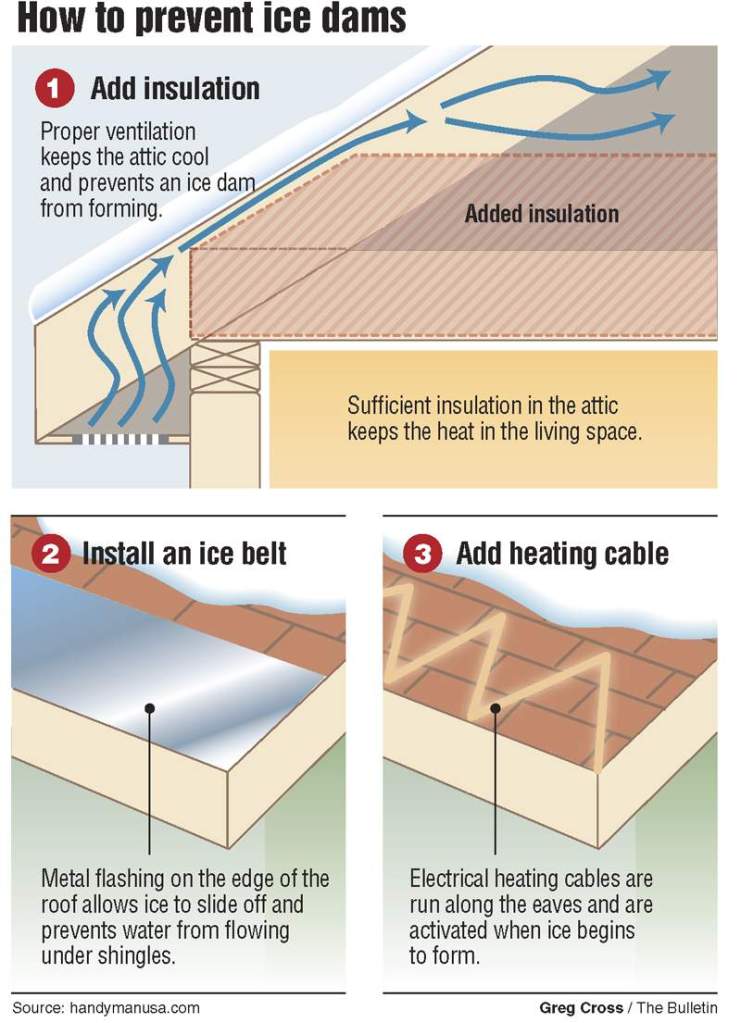Central Oregonians warned to watch out for ice dams
Published 4:00 am Wednesday, December 9, 2009

- Central Oregonians warned to watch out for ice dams
As more and more snow piles up on people’s roofs, Central Oregon residents need to be on the lookout for ice buildup on the rooflines of their homes.
Ice damming, as roofing experts say, can lead to costly water damage to homes.
Ice dams usually form after heat from inside the house escapes through the attic causing snow on the roof to melt. Afterward, the water will trickle down to the roofline, where it will freeze again during the night. This will build up after time, essentially creating a dam that stops water from escaping the roof.
The backed-up water can then seep into the home’s frame and insulation, causing water damage.
“You don’t want moisture touching anything inside your home,” said Ryan Flegel, owner of Flegel Contracting Inc., a roofing company in Bend. “It can cause major damage inside if it isn’t taken care of in time.”
Insulation can get wet and shrink in size, leaving places without insulation. Plywood can swell up and start rotting, the water can damage drywall and mold can grow in those places.
The best way to deal with ice damming is to prevent it from happening, Flegel said. People should begin knocking ice down once it starts to form in gutters and the edge of the roof. People can also hire a roofing contractor to go out and clear snow from the roof before it melts.
Another way of preventing ice dams is to install heat cables at the edge of the roof. Heat cables will begin heating up once ice begins to form over them or after a certain low temperature is reached.
Newer homes or recently installed roofs in Central Oregon don’t develop ice dams as much because current building codes require contractors to install ice and water belts under roof shingles, said Jeff Stringham, owner of Central Oregon Roofing in Bend.
These belts make it easier for ice and water to run off the roof. “It’s the older houses that people need to keep an eye on,” he said. “Those are the ones that are more likely to develop ice dams.”
Houses that have little or no overhang are also more likely to have ice dam problems, Stringham said. Houses with steeper rooftops are better designed to shed snow, ice and water as opposed to lower-pitched roofs, which allow more snow to build up.
Houses in Sunriver are more prone to ice dams, he said, because they are much older and the town often gets more snow than other areas. “These are all things people should be aware of when it comes to dealing with ice dams,” he said.
Homeowners insurance would cover damage caused by ice dams, said Jeff Melville, owner of High Desert Insurance in Bend. The damage falls under water damage, but Melville said he encourages people to prevent it instead of feeling safe because they are covered.
Melville suggests that people knock ice down from the roof and remove snow from the roof regularly. “My advice is that people know and understand ice dams before they turn into a claim,” he said. “Once that happens you have a huge problem.”






